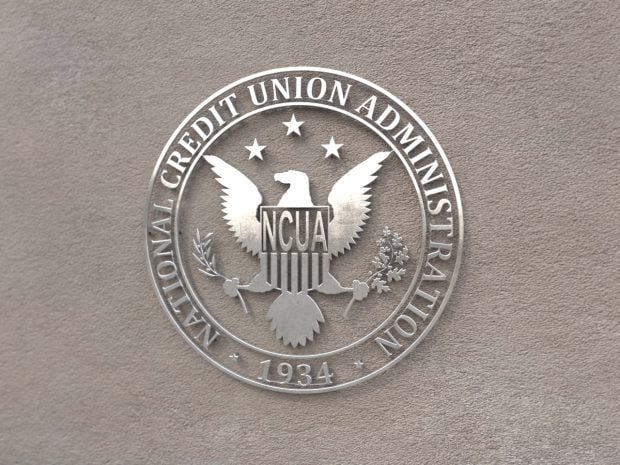Credit unions sowed the seeds for future political wins by planning a rally on the National Mall while President George H.W. Bush sowed the seeds for the demise of much of his support among conservatives by reversing his pledge not to raise taxes.
Those were among the political highlights of the year Credit Union Times was founded.
CUNA had already created Operation Grassroots to fight legislation that could hurt credit unions amid the regulatory restructuring efforts that followed the savings and loan crisis.
In 1990, the Bush administration began to discuss restructuring the agencies that regulated financial services and taking away the NCUA's independence. An unnamed official told The New York Times that such a plan had “the attraction of simplicity” and appeared to be “quite workable.”
In addition, the Treasury Department floated the idea of forcing credit unions to write off as an expense their 1% capitalization deposits in the NCUSIF.
Credit unions had other ideas.
Larry Blanchard, who was CUNA's senior vice president, said the group sought in the pre-Internet era to organize a grassroots effort to show lawmakers that credit unions would fare poorly if they were lumped in with other financial institutions.
“We needed to show that there was tremendous credit union unity on this issue,” Blanchard recalled.
So they developed plans to exercise their First Amendment right to peaceably assemble and petition the government for a redress of grievances.
To help build momentum for the rally, Blanchard made a video inspired by the classic film “It's A Wonderful Life.” The video, called “CURSE of the Banks,” imagined what life would be like if credit unions came under the regulatory purview of the Treasury Department. (CURSE was an acronym for Credit Union Regulation, Supervision and Examination, the possible name for the regulatory entity that would oversee credit unions.) Blanchard's video depicted a long staircase that led into the bowels of the department's office, where people would get lost trying to find their regulator.
The effort worked. CUNA gathered six million petition signatures and held a rally in conjunction with its annual Governmental Affairs Conference on the National Mall on Feb. 28, 1991 that attracted about 15,000 people. Simultaneous events at state capitals drew comparable crowds.
At the Washington, D.C., rally, people carried signs with sayings such as “If it ain't broke, don't fix it.”
Clinchfield Federal Credit Union President/CEO Sandy Lingerfelt took her first airplane ride to be there.
“I was overwhelmed by the enthusiasm of everybody there and was pleased we were able to accomplish something significant and have a voice in our government,” Lingerfelt recalled. “There were no strangers at the event. Everyone wanted to share experiences and compare notes of how they were helping people. Before the event, I knew credit unions were fantastic, but I didn't know how widespread the feeling was.”
After the rally, where several lawmakers spoke, attendees dispersed and delivered their petitions to Capitol Hill.
Blanchard said the rally and related activism “united credit unions, regardless of their charter.”
In the summer of 1991, Congress passed the Federal Deposit Insurance Corporation Improvement Act, a comprehensive financial services bill that did not include the proposals most distasteful to credit unions.
The measure required credit unions and other depository institutions to be more transparent in disclosing fees and interest rates on deposit accounts. It also required credit unions lacking federal share insurance to disclose that to members and repeat it in all advertisements. Members also had to sign a statement acknowledging that they were aware of the credit union's lack of federal insurance.
The question of federal versus quasi-private insurance was a hot topic because of problems in Rhode Island. Press accounts from the time report the collapse of the Rhode Island Share and Deposit Indemnity Corp., a state-supervised but privately funded and run entity that insured many banks, credit unions and savings and loan associations. When that happened, on Jan. 1, 1991, the state froze assets at 33 credit unions with assets totaling $35 million and 10 other financial institutions. Eventually, the NCUA provided insurance for 22 of those credit unions.
The problems facing troubled credit unions during that time prompted the NCUA to create the Asset Management and Assistance Center to help the agency unload foreclosed assets received from closed credit unions.
In addition, losses resulting from bad commercial lending by some credit unions led the agency to strengthen its enforcement of member business lending.
While the financial services industry was in tumult, so was Bush's political standing.
In his 1988 acceptance speech at the Republican National Convention, Bush said,
“My opponent won't rule out raising taxes. But I will. And the Congress will push me to raise taxes and I'll say no. And they'll push, and I'll say no, and they'll push again, and I'll say, to them, 'Read my lips: no new taxes.'”
He broke that pledge in October 1990 when he signed a budget package that combined spending cuts and tax increases.
Although many budget analysts credit the package with helping to reduce the budget deficit and eventually laying the groundwork for the surpluses of the 1990s, it irreparably damaged Bush's standing within the increasingly conservative Republican Party.
Republicans' tepid support for Bush in 1992 coupled with public discontent over the sluggish economy combined to cause Bush to be one of only four 20th century presidents denied re-election.
Bush's political fate may have been sealed in 1990, but credit unions came out of that period with greater clout. They would build on that strength eight years later to achieve a major victory in persuading lawmakers to pass the Credit Union Membership Access Act, which reversed a U.S. Supreme Court decision and gave credit unions broad authority to expand their membership.
© 2025 ALM Global, LLC, All Rights Reserved. Request academic re-use from www.copyright.com. All other uses, submit a request to [email protected]. For more information visit Asset & Logo Licensing.







